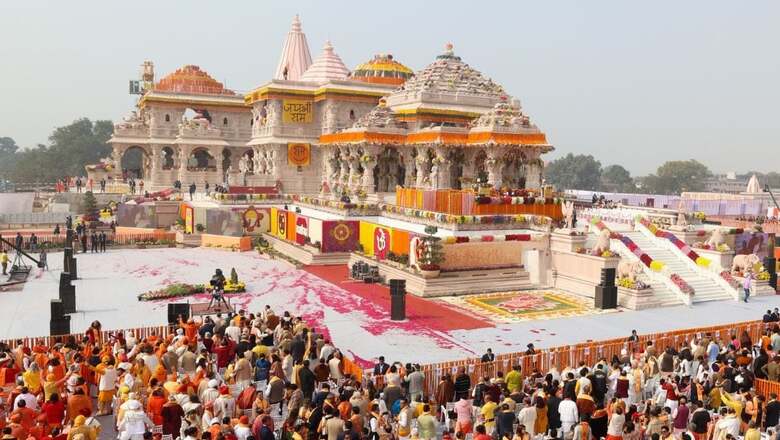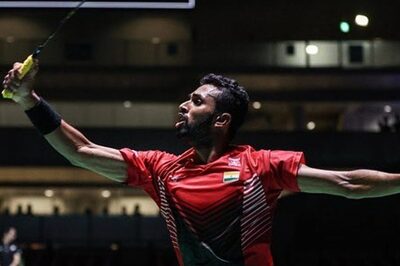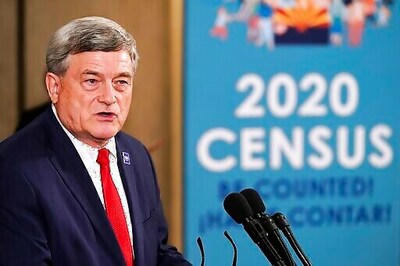
views
In one of his early writings, Pandit Deendayal Upadhyaya, who was, besides being the originator of the ideological and philosophical bases of the Jana Sangh-BJP, also a profound interpreter of India’s cultural essence, argued that, “Secularism cannot mean the contempt for national traditions and the cultural life of a nation” and that “a secularism that is based only on materialism can never match the nature and way of life of the people of our nation.”
Upadhyaya, who had also challenged the hegemonic Nehruvian systems which aimed at deconstructing India’s cultural bases and foundations, was active in countering this anti-cultural and anti-religious attitude of the Nehruvian dispensation and therefore spoke and wrote much on these issues. A lot of what he said remains strikingly relevant to this day. When speaking of the need for national self-esteem, an essential prerequisite for a free nation to shape and chart out its destiny, Upadhyaya argued that “Self-esteem is a feeling of the heart. I believe this feeling is essential too for the development of the individual and the nation.”
During most of the last seventy-plus years, the Nehruvian and Congress behemoth, propped up by Communists, promoted a secularism that was based on materialism and displayed a distinct disdain for India’s national traditions and our cultural life. The effect of this forced imposition was the dilution of our national self-esteem post-independence. One of the major directing ideas of our freedom struggle, as articulated by some of our finest thought leaders, was the need to recover this self-esteem. The cultural and educational movement that was part of the political movement for freedom had, at its centre, the driving vision of rekindling national self-esteem.
For Bipin Chandra Pal, the firebrand thinker-revolutionary, Swaraj, in the Indian cultural context meant “the supremacy and dominion of the self over the not-self. This is really the meaning of Swaraj as known in our ancient thought and culture.” The negation of our cultural symbols, the denigration of the faith of the majority, and the neglect of our religious and cultural centres, post-independence, has been the domination of the not-self over the self.
This neglect and denigration was seen over the decades in the approach of Nehruvian and Congress dispensation. The communist historians’ attempt to prevent a solution to the Ram Janmabhoomi issue for decades, their false statement in the courts that there was no evidence of a temple, their unflagging effort at sowing seeds of discord, their continuous barb, even after defeat, on the majority’s faith, their refusal of the invitation to attend Pran Pratishtha, all stem from this obsession with materialistic secularism. The invoking of the Constitution that they do, is only meant as a convenience to act as a cover for their actual disdain towards Hindu faith, symbols and traditions. The Congress, devoid of any credible intellectual or ideological heft has, of late, been the communist hand-maiden in this game of denigration.
PM Modi reminded us how the Constitution itself was illustrated with scenes from our epics, that Ram and his rule based on compassion and driven by values was one of the guiding lights of the Constitution. In that light, PM Modi spoke of “from dev to desh” – from deity to country, from “Ram to rashtra”. The worship of Shri Ram thus, in the Indian civilisational context, is the worship of the nation and of its civilisational values. RSS chief Mohan Bhagwat spoke of how a new India that would radiate relief to a crisis-stricken and confronted world was arising. The deeper significance of the Ram Mandir at Ayodhya thus was the renewal of India’s civilisational message to the world. It is of an India that is rising to impart a healing and uniting vision and message to the world in the throes of crisis and conflict.
A comprehensive empowerment of the most marginalised has taken place in the last decade, it is visible all across the spectrum. A multi-layered mainstreaming has and is taking the place of those who have faced repeated neglect over decades in terms of material and social empowerment. All this preceded the construction of the mandir at Ayodhya and symbolised the realisation, on the material and social plane, of the indices of the contours and vision of “Ram Rajya”.
Ensuring more than 4 crore houses for the most marginalised, making sure that 81 crore people from the most vulnerable sections of society do not go hungry, and uplifting nearly 25 crore people out of multi-dimensional poverty in the last decade, are some of the strongest indicators of how India is evolving into an inclusive Republic – a Republic that is compassionate, empowering, one which is becoming increasingly conscious of the self. A Republic that does not adhere to a contrived and materialised secularism. PM Modi’s insistence on “Vikaas” and “Viraasat” has led to this approach – development and inheritance – have been in equal focus and importance for integral national growth.
The intention of destroyers of the original temple, the intention of those who prevented a solution to the Ram Janmabhoomi issue, and of those who continued to oppose and berate the temple construction even after the verdict of the apex Court, was to keep the collective mind and consciousness of India subjugated or colonised. Among PM Modi’s “Panch Pran”, decolonisation of the mind, of mindset and of perception is fundamental.
The rekindling thus of our civilisational symbols, the feting of our heroes, the commemoration of unsung and overlooked contributors to our national self-esteem, the rejuvenation of forms of our cultural expressions and our core centres of faith and of worship, the tenacious effort towards all of these while working out the vision of a developed India – “Viksit Bharat”, is clearly indicative of a new schema of the essence and fundamentals of the Republic and Swaraj. In a tract he wrote in the 1930s – ‘The Brahmo Samaj and the Battle for Swaraj in India’ – Bipin Chandra Pal spoke of building up “Swaraj character” in the community, upon which alone could a “Swaraj state” be reared.
In the last decade, through his multi-dimensional and multi-pronged national action, what PM Modi has attempted to do is essentially to rear up a Swaraj state with a Swaraj character. The grand and ennobling Ram Mandir at Ayodhya is one of the finest and most enduring symbols and edifices of the Swaraj state with a Swaraj character. Those who have stood in opposition are trying, unsuccessfully, to retard and arrest India’s evolution towards a comprehensive, all-encompassing and empowered Swaraj.
The author is Chairman, Dr Syama Prasad Mookerjee Research Foundation & Member, BJP National Executive Committee. Views expressed in the above piece are personal and solely that of the author. They do not necessarily reflect News18’s views.




















Comments
0 comment